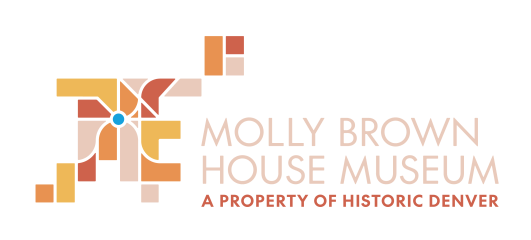NERDY ADVENTURES OF THE EDUCATION INTERN
There are pictures of me in Los Angeles at the Paul Getty Museum when I was not even a year old and I can tell that trip was the start of my passion for history and museums. I grew up going to museums in NYC, where my mom would fatigue from seeing my favorite exhibits over and over again, a trend that I would set until I went to college when I decided to study history with the intention of working in museums. Studying history in high school felt like an expectation to accept textbooks as fact, but after taking my first college level history class I felt like I was finally learning how to analyze history, using different narratives to challenge widely-accepted perspectives. At CU Boulder, I volunteered with different museums and got to visit several of Denver’s museums as well.
I stumbled upon the Molly Brown House Museum on day after I Google searched “history” and “Denver.” I did some research about Margaret “Molly” Brown, since I had never heard of her and learned that not only was she stylish and well-traveled, she helped fundraise for the Denver Dumb Friends League and St. Joseph’s Hospital, drove an ambulance in WWI, played a big role as a suffragette in Colorado and Rhode Island, and survived the Titanic…how had I never heard of her? Well, that’s because the Molly Brown that I had heard of was portrayed as an uneducated, boisterous, social outcast from movies like The Unsinkable Molly Brown and the Titanic. This widely-accepted view of Margaret’s life disregarded her name as well her true role as one of Denver’s most outspoken, highly-educated, and active citizens working to make the city a better place.
After I moved back to Colorado following a short stint in New York helping out my family’s business, I knew that somehow I needed to be apart of the museum world once more. I intended to volunteer some time at the Molly Brown House Museum, so I contacted the institution and the next thing I know I’m discussing my passion of history and education with the museum’s staff. I was delighted when I was asked to come on board for an education internship where I could help preserve women’s history in Colorado by working on a project for third and fourth graders learning local history. I have always wanted to teach history, especially women’s history, and this was the perfect opportunity to get involved with historical research and education. I am excited to preserve Margaret’s story, a history that would help future generations develop their analytical skills and learn to think for themselves: not everything you read is true.
Internships, at any institution, are kind of a strange in-between position. There are days where I can go to the library and research the incredible women of Colorado for the entire day and then again there are days where I find myself in front of a spreadsheet for hours. That is part of the reason why I am grateful for my position with the museum. It is as if I have signed up for a 3-month free trial where I experience what it takes to successfully run a museum. I am also grateful for my position with the museum as a docent, where giving tours allows me to share Margaret’s story to visitors who may have only heard about through Hollywood’s mythological history. My position as an Education Intern allows me to work with the museum developing education programs behind the scenes and on the scene as a docent sharing Margaret’s story.
I have found Margaret’s strong work ethic, perseverance in the face of adversity, and enthusiasm for education a huge inspiration for me in my life as I work toward becoming a professional in museum studies. Margaret once said when looking back at her own story, “It isn’t who you are, nor what you have, but what you are that counts,” and what counts to me is standing up for what I believe in while building my own future. I thank Margaret Brown and the opportunity to work with the Molly Brown House for teaching me that.
Carmela Ortiz
Education Intern & Docent
